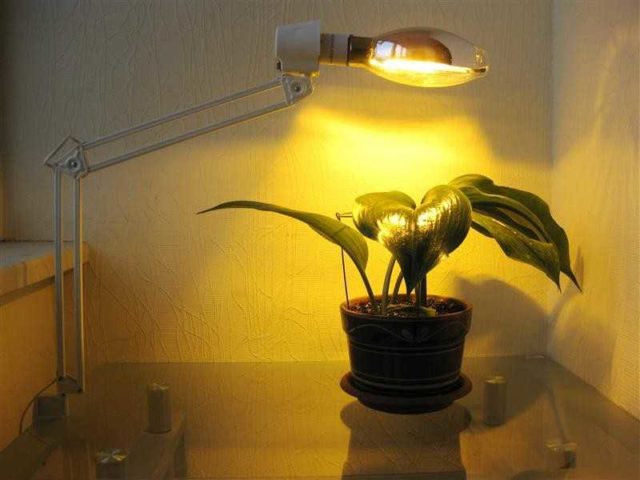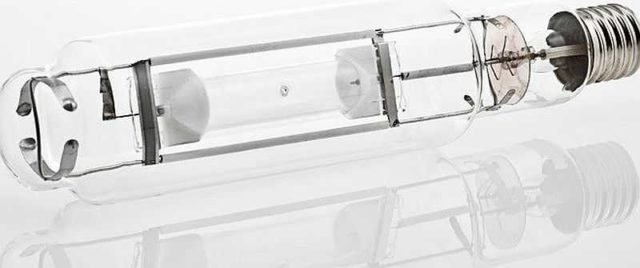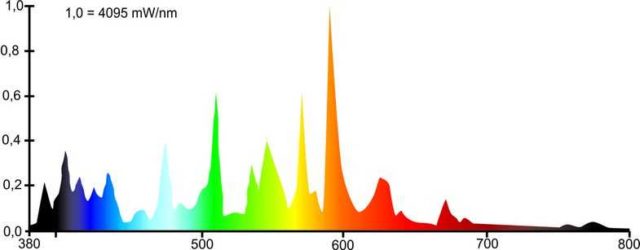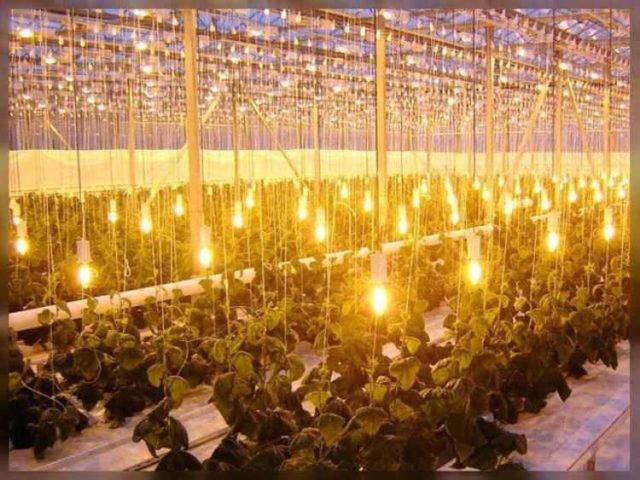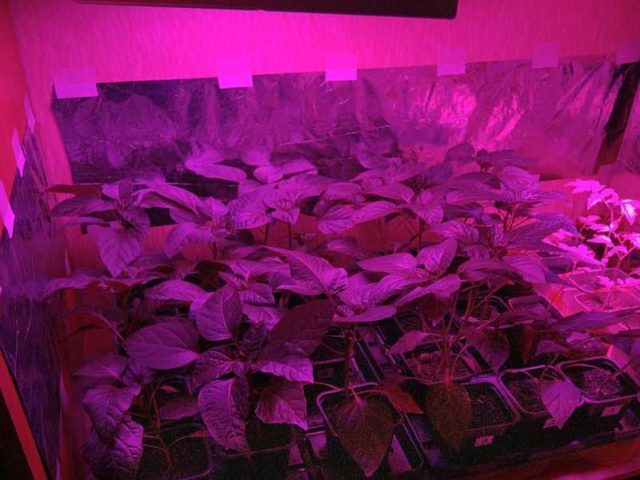Grow Lights For Indoor Planting Lighting
Writer:Jane Time:2020-11-08 Browse:192
Planting family plants, summer cabin seedlings aren't just about saving souls. I want these plants to be strong, healthy, and pleasing with leaves and flowers and fruit. In our environment, it is not always possible to do this without extra effort. The main problem is the short days. Make it backlit. And for this there are special plant growth lamps. They are also called grow lights, or agrolamps. Plenty of names, but the essence is the same - they are the light sources that make plants grow, blossom and bear fruit better.
What is a grow Light and how is it different from a regular lamp?
For plants to grow and develop, they need light waves from a specific part of the spectrum. In our color perception, this is light in the red and blue range. The blue part of the spectrum has wavelengths of 420-460 nm and the red part has wavelengths of 630-670 nm. Plants need the rest of the spectrum, but in much smaller quantities.
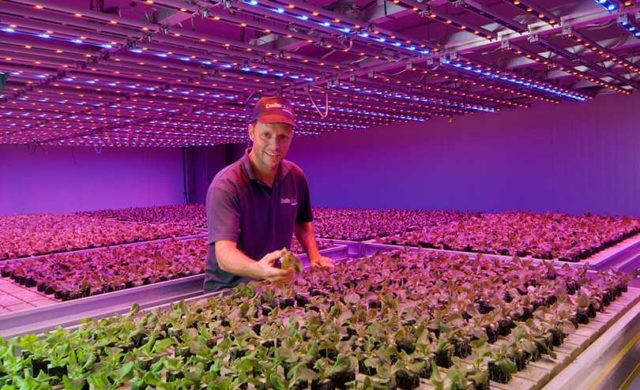
When planting and maintaining greenhouses, plants "light up" - they use extra light to extend the hours of daylight. You can do this with ordinary lamps, since their spectra also contain the desired range of light radiation. The difference with a plant growth lamp is that the spectrum consists mainly of waves of the required length. So, in theory, they would be more economical than conventional backlights. In fact, plants use less energy for their "unnecessary" spectrum. This light source is also called a farm lamp. They sell not only individual bulbs, but whole lights. They are also known as plant growth lamps and plant fill lamps. But the essence is the same - in this light source, there is a lot of red and blue light.
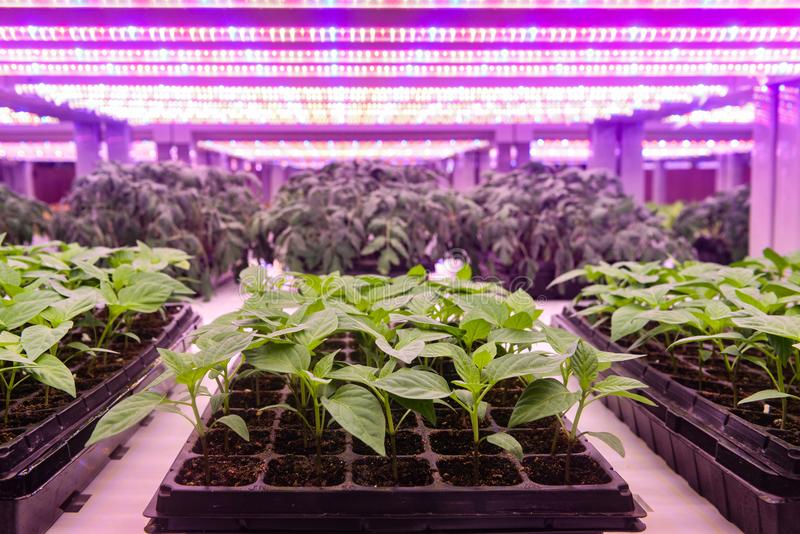
There are two types of growth lamps. Some gaseous discharge gases have the whole spectrum, but they differ in that the radiation intensity is higher in the desired range. This is reflected in the spectrogram of this light source. The second type of lamp is narrow-segment fluorescent lamps and LEDs. You can distinguish it from a traditional light source. Because it has mainly red and blue spectra, it emits purple light.
Type of growing lamp
The special lamps used for lighting plants can be of different types. There is no ordinary incandescent lamp - it is simply not possible to change the glow spectrum here. All else seems to be:
1. High pressure sodium lamp (HPS).
2. Metal halides (MGL).
3. Mercury discharge lamp (DRL).
4. Fluorescent lamps (with different connectors, including standard E27).
5.LED(strip, light with different sockets).
As you can see, the list is long - these lights are available in stores. None of them are perfect, so for the selection, you want to know their characteristics, strengths, and weaknesses. We'll deal with all the major types, their properties, and application functionality. Let's say right away that we are only reflecting on technical issues. Effective lighting techniques for different types of plants at different stages of growth - this is not the subject of our website.
High pressure sodium lamp
This plant light has been around for a long time. It is also used in large greenhouses dedicated to growing vegetables and in large greenhouses dedicated to growing seedlings. With basic sodium lamps, light can be transmitted in all directions. This is acceptable for a greenhouse, but inconvenient for a house because it blinds the eye. Sodium lamp has an improved version -DNAZ. Part of the bulb has a mirror coating that allows you to create a directed light stream. Conventional sodium lamps can be installed in lighting fixtures with reflectors. They produce much the same effect as a mirror coating. For smaller projects, you can make boxes with reflective walls. This reduces the cost of backlighting, but in small volumes, the air temperature must be monitored - this type of light can be very hot.
Plant Metal Halide Lamp (MHD)
This is one of the subspecies of gas discharge lamps characterized by the presence of halogen vapor in the bulb. The rest of the structure is very similar to other gas discharge lamps. Also, to work, you need a special lamp - with controls and better than an electronic lamp. In addition, the protective glass on the plant flask must be strong, as the flask may explode under high pressure.
If we look at the spectrum of light emitted by this type of lamp, we see clear pulses in the green and orange areas. Less blue, but enough. This color combination is typical for early spring sunlight. In other words, the MGF will play a role in the early stages of plant development -- an excellent source of light for seedling growth. Using the MGL lamp, plants have strong roots that can grow actively without stretching and can place a sufficient number of internodes and buds. The same type of lamp is suitable for lighting aquariums - it promotes the active growth of algae. But during flowering, ovary formation and fruit ripening, the usual illumination is absolutely ineffective.
The MGL lamps have an extended red spectrum, suitable not only for the beginning of the growing season, but also for crop formation and ripening. Therefore, you can choose the spectrum for any type of plant, but the price of the special lamp is not satisfactory.
Mercury gas discharge lamp (DRL)
The difference between these discharge lamps is that no additional equipment is needed to use them. Simply screw them into a standard lamp holder connected to a 220 V network. The second point is that the bulbs are made with a mirror-like coating, which allows you to create a directed light stream without wasting energy on "lighting the ceiling." The gas discharge mercury growth lamp is called DRLF. The red and blue parts of the spectrum are more intense.
Fluorescent lamp plant lamp
This is also a type of discharge lamp -- we know that from household lamps. By the way, you can use regular fluorescent lights for seedlings, but it's tall and thin, with underdeveloped roots. So, after all, it's better to use special lights. Yes, they are many times more expensive than traditional ones, but this is due to the more complex production process.
LED(light emitting diode) plant lamp

LEDs have become cheaper in recent years and are widely used for lighting indoor plants. The production technology allows the crystal to grow in monochrome. It's available in wireframe and blue. But to illuminate plants, you need certain wavelengths -- LEDs of this spectrum, 420-460 nm in blue and 630-670 nm in red.
They are available in bulk either as single crystals or as a band of some power. If we use "botanical tape", then it contains red and blue LEDs in order to get the spectrum, which seems necessary. But usually in the LED bars of plants, red light dominates. It helps plants grow and blossom. You need more blue to make a root. Therefore, "standard" plant tape is not suitable for seedlings. Unless you purchase a separate blue and then add it to the phyto-led light strip.
There are also LED plant growth lights. Red and blue elements have been added to them to some extent. The only problem is that they are also sharpened for vegetation and flowering. For seedlings, they are ineffective: the root system is weak and the internodes are long. Therefore, for seedling growth, it is best to make your own lamp, or add blue.
Often, LED plant growth lights are an economically correct solution. There are opponents of this technology, but they have no clear arguments - the main argument is that large greenhouses are in no hurry to switch to new growth lights.



